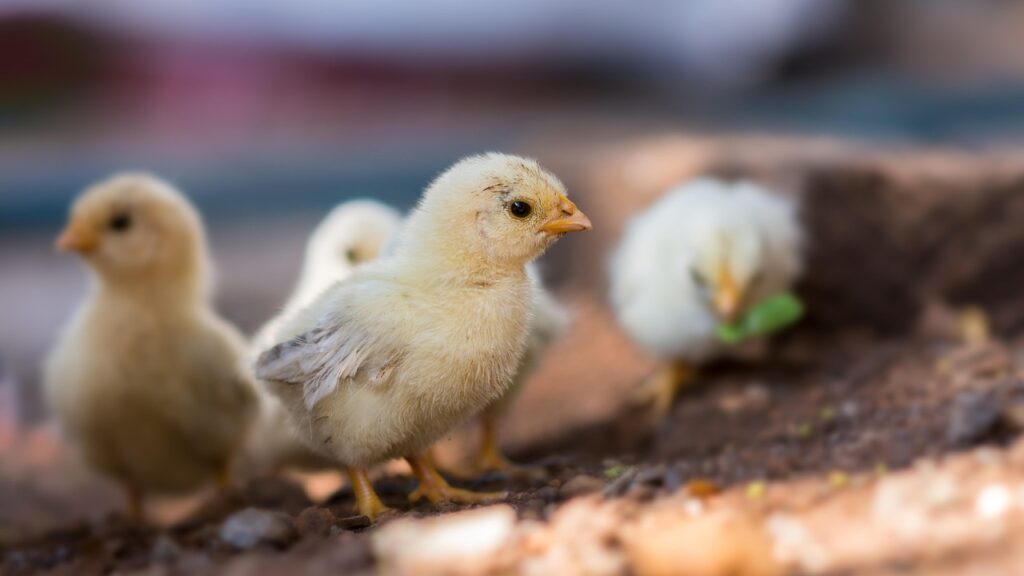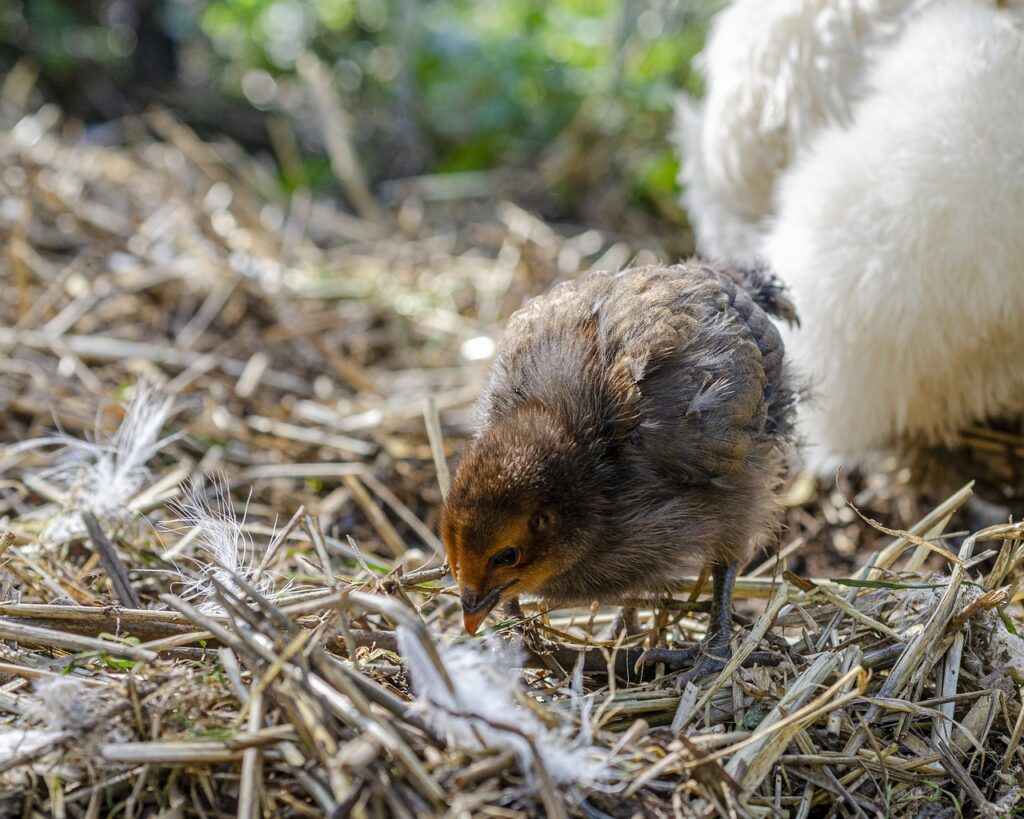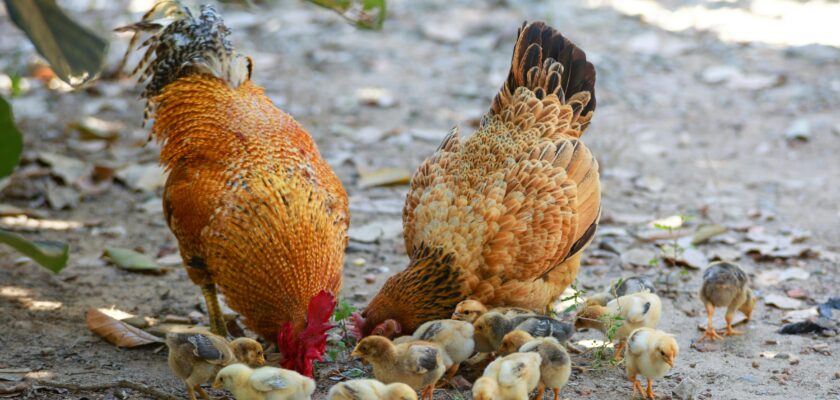Introduction: Why Breed Knowledge Matters for Baby Chicks
Raising baby chicks starts with one critical step: choosing the right breed. Whether you’re in it for fresh eggs, meat production, or just a friendly backyard companion, understanding breed-specific traits will help you build a thriving flock.
A baby chick chicken breeds chart is your roadmap—it compares different breeds by characteristics like growth rate, egg production, and temperament. In this guide, we’ll walk you through the most popular breeds, how to read a chart effectively, and what to expect as your chicks grow.

Image by Xuân Tuấn Anh Đặng from Pixabay
Understanding the Baby Chick Chicken Breeds Chart
What Is a Breeds Chart?
A chicken breeds chart is a side-by-side comparison of major traits for different chicken breeds. It’s a must-have for beginner and experienced chicken keepers alike.
Here’s what it typically includes:
| Trait | Description |
| Breed Name | The recognized name of the breed |
| Egg Color | White, brown, blue, or green |
| Egg Production | Number of eggs per year |
| Temperament | Friendly, docile, skittish, etc. |
| Size | Bantam, standard, large |
| Climate Tolerance | Cold-hardy, heat-tolerant, etc. |
How to Read a Chicken Breeds Chart
When reviewing a breed chart, look for your priorities:
- Want consistent eggs? Focus on high producers like Leghorns.
- Need hardy winter birds? Look at breeds like Australorp or Wyandotte.
- Interested in colorful eggs? Ameraucanas or Easter Eggers are your go-to.
This targeted reading ensures you’re selecting breeds aligned with your homesteading or hobby goals.
Top 15 Baby Chick Chicken Breeds You Should Know
Here’s a detailed rundown of the most popular breeds for backyard flocks, especially for beginners and small-scale keepers.
1. Rhode Island Red
- Egg Color: Brown
- Production: 250–300 eggs/year
- Temperament: Hardy and assertive
- Best For: Egg-laying and dual-purpose use
2. Plymouth Rock
- Egg Color: Brown
- Production: 200–280 eggs/year
- Temperament: Calm, friendly
- Best For: Family-friendly flocks
3. Buff Orpington
- Egg Color: Light brown
- Production: 190–240 eggs/year
- Temperament: Docile, cuddly
- Best For: Cold climates and pets
4. Leghorn
- Egg Color: White
- Production: 280–320 eggs/year
- Temperament: Active, flighty
- Best For: Commercial egg layers
5. Sussex
- Egg Color: Cream to light brown
- Production: 250–275 eggs/year
- Temperament: Curious, alert
- Best For: All-around utility
6. Australorp
- Egg Color: Brown
- Production: Up to 300 eggs/year
- Temperament: Gentle, quiet
- Best For: Cold climates and eggs

Image by Franck Barske from Pixabay
7. Silkie
- Egg Color: Cream
- Production: 100–120 eggs/year
- Temperament: Sweet, social
- Best For: Pets and brooding
8. Wyandotte
- Egg Color: Brown
- Production: 200–250 eggs/year
- Temperament: Independent
- Best For: Decorative and winter flocks
9. Ameraucana
- Egg Color: Blue
- Production: 150–200 eggs/year
- Temperament: Reserved
- Best For: Unique egg colors
10. Barnevelder
- Egg Color: Dark brown
- Production: 180–220 eggs/year
- Temperament: Calm
- Best For: Ornamental and small homesteads
11. Brahma
- Egg Color: Brown
- Production: 150–200 eggs/year
- Temperament: Gentle giant
- Best For: Cold weather and meat
12. Marans
- Egg Color: Dark chocolate brown
- Production: 150–200 eggs/year
- Temperament: Quiet
- Best For: Egg color variety
13. Easter Egger
- Egg Color: Blue, green, pink
- Production: 200–250 eggs/year
- Temperament: Playful
- Best For: Egg rainbow lovers
14. Welsummer
- Egg Color: Terracotta
- Production: 160–200 eggs/year
- Temperament: Bold
- Best For: Beautiful eggs and rustic appeal
15. Dominique
- Egg Color: Brown
- Production: 200–250 eggs/year
- Temperament: Friendly
- Best For: Heritage flocks
Image by Franck Barske from Pixabay
Key Features to Compare in Chick Breeds
Growth Rate
Some breeds mature faster than others. Leghorns, for instance, start laying as early as 16–18 weeks.
Egg Production
Your breed choice affects how many eggs you’ll get annually. Look for layers with 250+ yearly egg counts if volume is a priority.
Temperament
Want a cuddly backyard companion? Go for docile breeds like Buff Orpingtons or Silkies.
Cold and Heat Tolerance
Climate matters. Australorps and Brahmas thrive in cold, while Leghorns handle heat better.
Baby Chick Care Basics by Breed
Feed and Nutrition
Chick starter feed with 18–20% protein is ideal for all breeds until they reach 6–8 weeks.
Housing Needs
- Space: At least 2–3 sq ft per chick
- Ventilation: Essential to prevent respiratory issues
- Bedding: Pine shavings are absorbent and safe
Socialization Tips
- Handle gently and regularly
- Use soft voices and treats
- Keep a calm, clean brooder environment
How to Use a Breeds Chart When Planning Your Flock
- List Your Priorities: Eggs, meat, temperament, climate.
- Use the Chart: Filter breeds by matching traits.
- Start Small: Mix 3–5 breeds to see what works best.
- Track Growth: Keep records of milestones and behaviors.
FAQs
1. What’s the best chicken breed for beginners?
Plymouth Rock or Buff Orpington—easy to manage, friendly, and hardy.
2. Which baby chick grows the fastest?
Leghorns are fast growers and early layers.
3. What breed lays colorful eggs?
Ameraucana, Easter Egger, and Marans are top picks for egg color variety.
4. Are Bantams good for egg production?
Not typically. They lay fewer, smaller eggs—better suited for pets or shows.
5. Can different breeds live together?
Yes, as long as they are introduced properly and have enough space.
6. When do chicks start laying eggs?
Most breeds begin laying between 18–24 weeks of age.
Conclusion
Choosing the right chicken breed starts with knowing your goals and understanding the unique traits of each option. A well-maintained baby chick chicken breeds chart empowers you to build a productive, peaceful flock tailored to your climate, egg preferences, and lifestyle. Whether you’re homesteading or just dipping your toes into backyard chicken keeping, this guide gives you the foundation to thrive.
